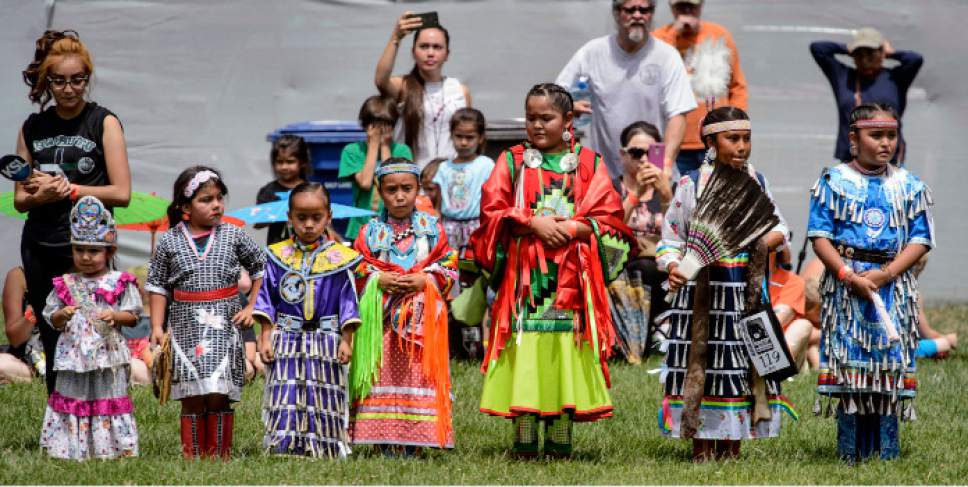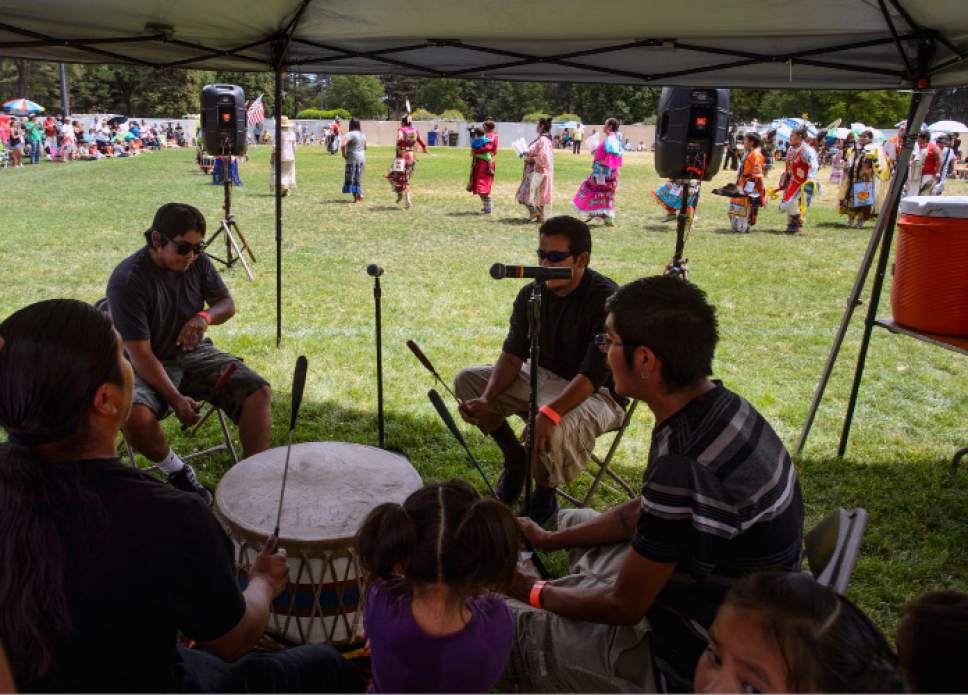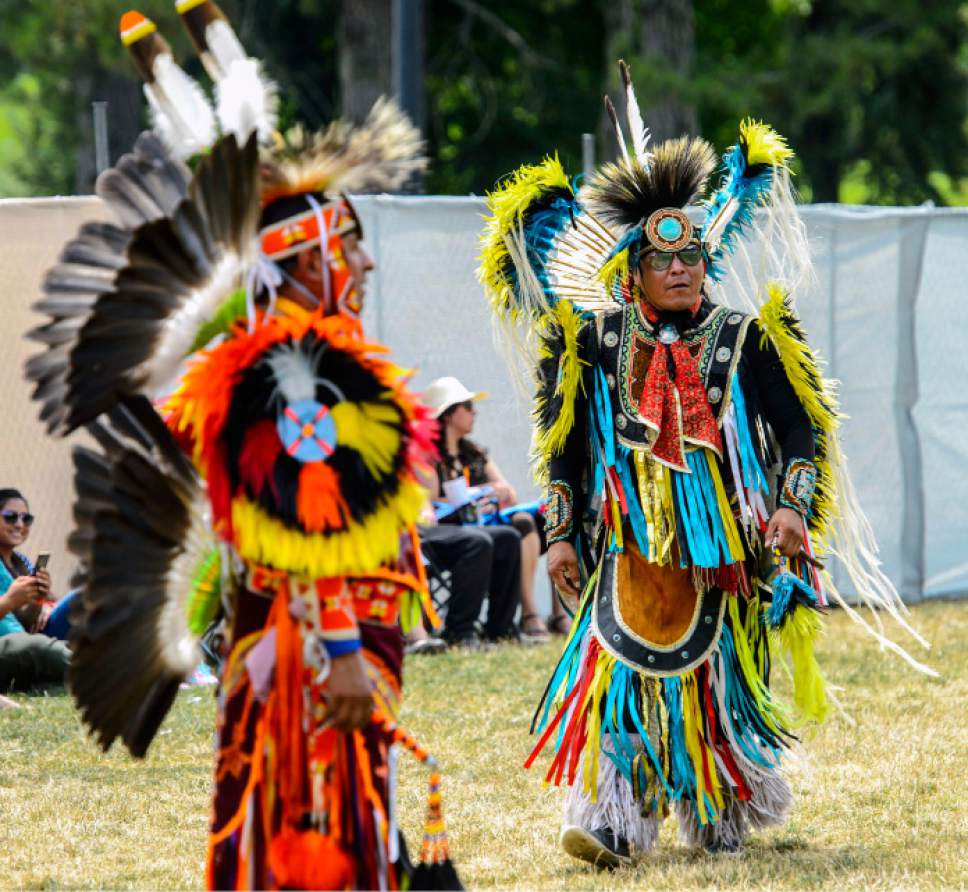This is an archived article that was published on sltrib.com in 2017, and information in the article may be outdated. It is provided only for personal research purposes and may not be reprinted.
Latanya Robinson has been dancing in powwows since she was a little girl, but on Monday she became the center of attention in Salt Lake City's Liberty Park, where dozens of American Indian dancers and musicians gathered for the 23rd annual celebration.
The 29-year-old Navajo from Montezuma Creek served as the honorary "head lady," attired in a mostly purple jingle dress, embroidered with her mother's elaborate beadwork.
"It's a great honor to be the head lady. I got into dancing through my parents. They never pushed us out there. We enjoyed it ourselves," she said before hoisting herself out of her shaded chair for another round through the dance arena under the blistering sun and near-triple-digit temperatures.
Driving the dancers was a five-man crew of Hopi drummers who call themselves Five Fifty, sitting around a single drum. They pounded it in unison as their voices carried across the park.
"There's no words, we just harmonize," group leader Hendrickson Talayumptewa said of their opening song. He composes many of the group's songs, but this one they picked up from another group.
Five Fifty's name arose from a friend's observation after the group's first performance.
"He said, 'It sounds like 50 of you guys singing, but it was only five of you,' " group member Alton Begoshytewa said. "It's learning how each one of us sings and then harmonize. We have to try to match each other's voice and keep it at the same tone. That's how you sing with drum. It's in unison."
The group members hail from Second Mesa on the Hopi Reservation, an island within the much larger Navajo Reservation, where work is scarce and many survive by keeping Hopi culture alive through the arts and crafts.
"This is how people make a living," Begoshytewa said. "It's pretty hard on the reservation. Most of us have to go off to get a job to Flagstaff, Winslow or down in Phoenix. It's a struggle, but you have to keep yourself going every day."
The drummers likened their music to a heartbeat and their drum, which they made from cowhide, to their grandfather's heart.
"You open your mind, your heart, your soul. It takes a lot to make a drum," Tobi Lomayestewa said. "Drums have different tones. This is old style. Contemporary is more high-pitch screaming, and old style is harmonize. We are in between."
Cal Nez of Sandy launched Native American Celebration in the Park as an informal gathering in 1995 to coincide with the finale of the Days of '47 Parade at Liberty Park and to extend the celebration into the evening. Over the years, it became a full-fledged powwow, but, to Nez's chronic disappointment, the powwow and parade have never been partners. This year marked the first time powwow dancers participated in the massive parade, which celebrates Utah's Mormon pioneer heritage.
That was progress for Nez, but he wants to see more to ensure the survival of an event that honors American Indian heritage.
"Year after year, I am really shocked that we have to go out and fight like crazy to make this thing happen," Nez said. "It all comes down to money. We even reached out to these guys, Days of '47, at least to cross-promote. If Days of '47 are saying that they are celebrating their culture, well, fine, why don't we all participate?"
At the powwow's opening, speakers paid homage to the Mormon pioneers who first appeared in 1847 and then arrived in droves through the decade that followed to establish new communities in territory they called Zion, but that eventually took a name after one of the region's tribes.
"We welcomed other settlers in this valley, we greeted them with open arms as well, and yet we defended our way of life, we defended our lands, we defended our rights here in this great valley called Utah," said powwow emcee Alex Shepherd, a Cedar City resident. "We've seen a lot of changes. We've seen us all come tougher as one under God as we celebrate the coming of the pioneers to be amongst the Paiute, amongst the Ute, amongst the Shoshone, amongst the Dine, amongst the tribes that were here in Utah."
bmaffly@sltrib.com
Twitter: @brianmaffly













